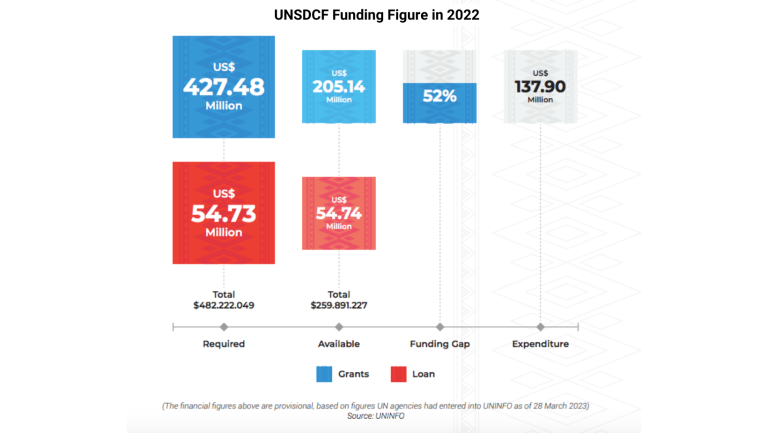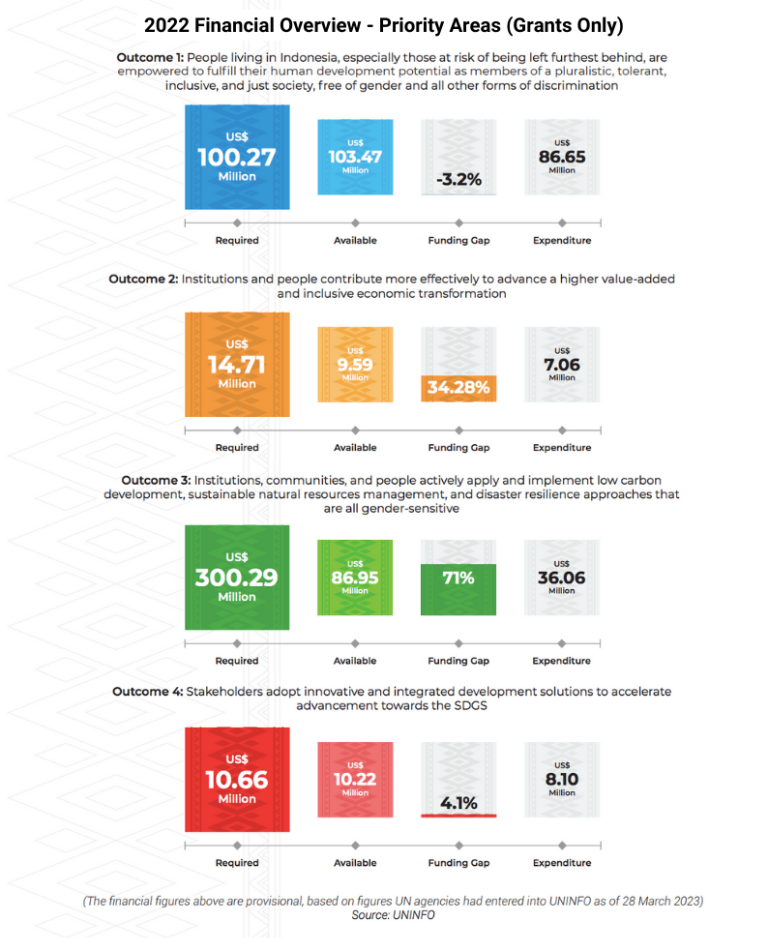
In 2022, the United Nations (UN) in Indonesia had a total budget requirement of US$482 million, comprising both grants and loans. However, the UN was only able to secure US$259 million in grants and loans to support the implementation of the UNSDCF in 2022, leaving a significant funding gap of US$222 million, which accounts for 46% of the required budget.
If we exclude the loans, the UN's total required budget was US$427 million. In this case, the UN received US$205 million in funding, resulting in a gap of US$222 million, corresponding to 52% of the required budget.
The funding gaps, excluding loans, varied across the different outcomes. Outcome 3 faced the most substantial funding gap at 71%, followed by Outcome 2 at 34.8% and Outcome 4 at 4.1%. Surprisingly, Outcome 1 seemed to have a negative funding gap of -3.2%. This discrepancy might be attributed to agencies awaiting confirmation of expenditure figures from their official financial report, which might not have been available at the time of the Country Results Reports’ publication.
One notable observation is that the total expenditure figure for 2022 turned out to be significantly lower than the available funds for that year. This was mainly due to the additional time required for UN Agencies to finalize and certify their financial delivery rates, as not all the reports had been submitted to UNINFO by March 28, 2022. This delayed process contributed to the gap between available funds and actual expenditure.


